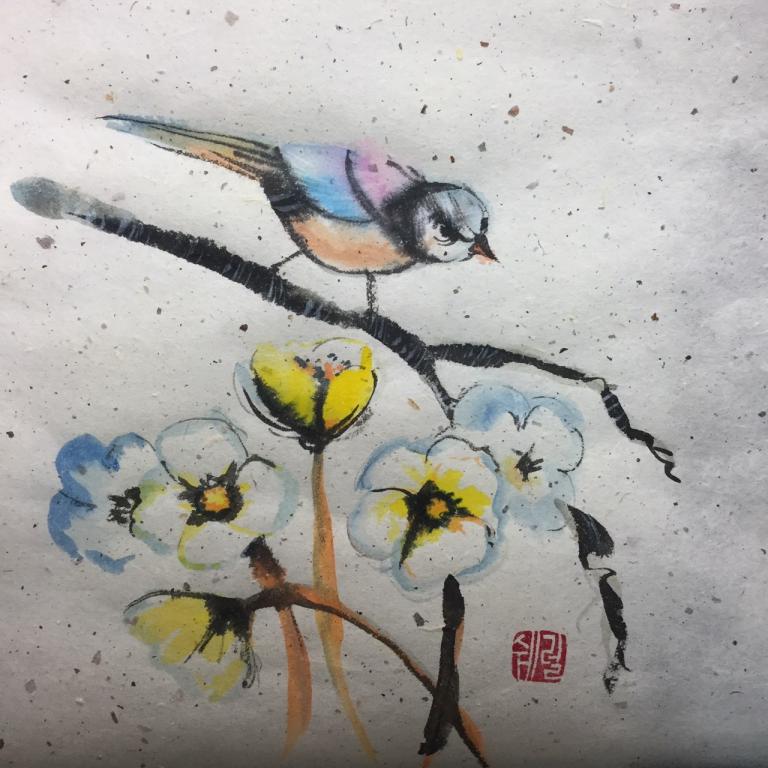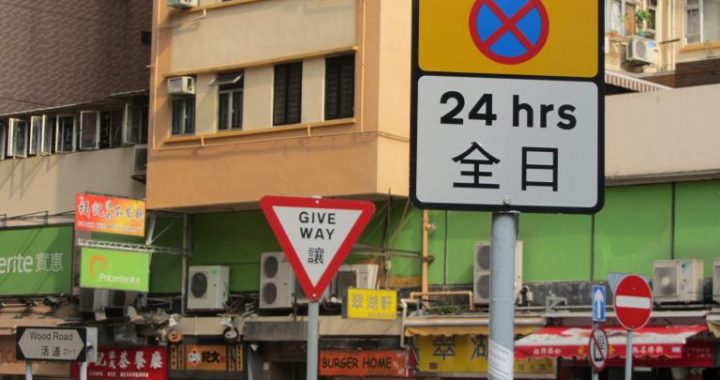Chinese Fiber arts
7 min readModern fiber arts stemmed from ancient tapestry art. They have not only inherited the traditional weaving culture, but also become diversified in form and style by taking advantage of modern artistic concepts, weaving technologies, composite material research results, and technical innovation results. With respect to form and style, they can be roughly categorized into knitting art that is based on graphic art, soft sculpture that lays emphasis on vertical presentation, and decoration art that is concentrated on spatial art.
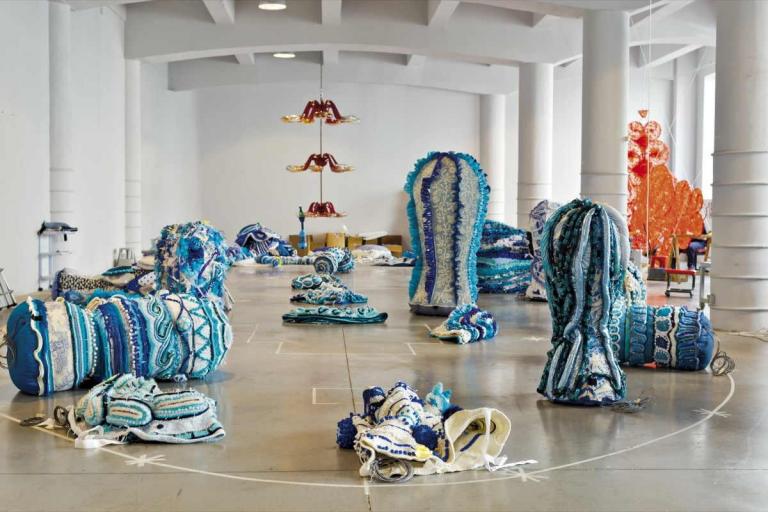
Chinese traditional fiber arts hinged on locally available natural materials, like plant fibers including stem, phloem, flowers, leaves of bamboo, rattan, palm, willow, sunflower, reed, rice, wheat, sorghum, corn, flax and cotton, and animal fibers including silk, hair, horse tail, bristle wool, cashmere. Those natural fibers are widely used in Chinese people’s life and production activities. In the pre-Qin period, the animal and plant fiber clothes and ornaments were very common. The silk materials in the Warring States were mainly the linen fiber. Despite being rough, it can be made into the chevron and rhombic twill. Till the Han Dynasty, the carpet weaving technology had reached a very high level. Later on, institutes and craftsmen specializing in embroidery appeared. They continued to look for new materials and improve the technology in practice. Chinese tapestry art has a long history also known as the wall hanging due mostly to “be hung up”to decorate wall. Since ancient times, in Xinjiang, Tibet and Inner Mongolia, people are good at using wool woven to make tapestry. Tapestry was called the hair felt, also known as hair mat or Ji. It is a plain woven wool fabric, originated from the pasturing area in Northwest China, well-known for the handcraft. It has a history proved by the material object of over 2,000 years. Mongolia, Uygur, Tibetan and other ethnic minorities, in order to meet the needs of nomadic life, used local abundant wool to twist wool yarn, woven the colorful hassock, tapestries and carpets, and sold them to the Middle East through the Silk Road, gradually forming the brilliant ancient Chinese tapestry art. Because the living style of Han people was widely different from that of nomadic people carpets in Han regions were often for paving the floor, rarely used as a whole set of floor and wall decoration. Since the Song and Yuan dynasties, the weft-broken, lifelike K’o-ssu, themed majorly at the painting and calligraphy, were highly appreciated and became the silk craft boutique of Han people. The embroidered figures of Buddha and brocaded Thangka of the ancient Chinese Buddhism art are also the typical works of traditional fiber arts.
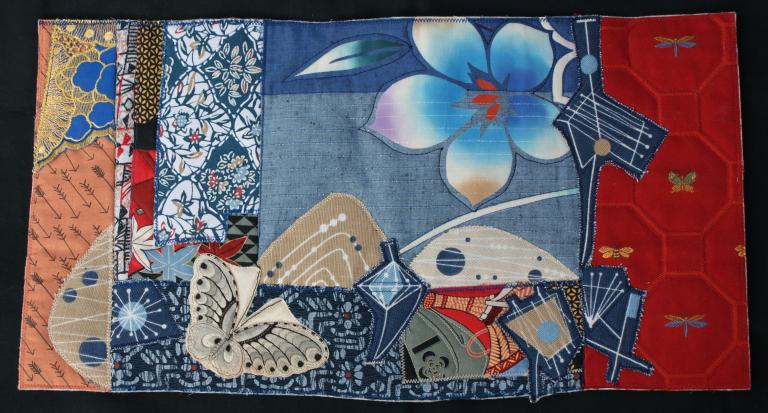
After 1949, carpet and tapestry became the main varieties of fiber art. By then, the carpet and the tapestry, with the traditional tufting process, on the creative principle of realism, having the realistic visual effect, was pursuing to revivify the real life, such as the national gift for the United Nations Headquarters-the carpet “the Great Wall” in the 1970s. After the reform and opening up, with the development and changes of art concept and modern environmental art, artists directly involved in the design and manufacture, to transform the tapestry art to the plane fiber art, forming the trend of artistic concept expressing, comprehensive materials exploring and diversified-style development. Three-dimensional and special fiber arts are another important form of modern fiber art. The small furnishing and the special decoration for large structures are all the”soft sculpture.” Soft sculptures have enriched the traditional forms of tapestry, and broken the stereotype that sculpture must be hard object. Hard sculptures can’t be changed in form once fixed, but not the soft sculpture. With the intention of creators and the building space changing, the form, array mode and exhibition mode of soft sculpture can alter. The three-dimensional structure of soft sculpture matched with the light and sound can produce a change irregularly effect, as well as create special situation and atmosphere. Since 1980s, the fiber art education and exchange between China and foreign countries have promoted the transformation and development of Chinese modern fiber arts. In 1983, the Senegal artistic tapestry exhibition and Finland modern tapestry exhibition held in the National Art Museum of China and Beijing Exhibition Hall respectively further affected the tapestry design in China. In 1984, the first Chinese tapestry art exhibition held in the National Art Museum of China was the first thematic exhibition of modern fiber art nationwide. At the exhibition, works of Lin Xiao and Leng Bingchuan from Nantong Arts and Crafts Research Institute of Jiangsu, attracted much attention for the use of comprehensive materials. In 1985, Maryn Varbanov, the Bulgarian fiber artist introduced systematically the creation idea of the western advanced fiber art into China, and held the modern fiber art exhibition at the National Art Museum of China, which served as a driving force for the new fine art movement at that time. When it comes to education, Department of Decorative Arts of the Central Academy (merged into Tsinghua University in 1999, renamed as the Academy of Arts Design, Tsinghua University) created a series of modern decorative tapestries in 1979 as proposed by Yuan Yunfu. In 1981 Professor Ruth Kao, the fiber artist from University of Wisconsin in the United States led a group of fiber art students to visit the Central Academy of Fine Arts, marking the beginning of the research of modern fiber art in China. Lin Lecheng initiated the first woven tapestry design program in China in 1985, indicating that the modern fiber art already kept a foothold in the Central Academy of Fine Arts. In 2000, the Academy of Arts Design, Tsinghua University officially enrolled the first group of postgraduate students, and established a fiber art studio. In 1986, Zhejiang Academy of Fine Arts (in 1993 renamed as the China Academy of Art)set up the Maryn Varbanov’s Wall Hanging Art Institute, the first one of its kind engaged in contemporary fiber art creation and teaching in China, advocating for the use of the soft material fiber as an independent approach of artistic expression rather than a simple craftsmanship. In artistic creation, Shi Hui followed Maryn Varbanov’s artistic philosophy, and founded a fiber and space art studio at the China Academy of Art in 2003. As a result, two development centers for Chinese modern fiber art came into being: the Academy of Arts Design, Tsinghua University and the China Academy of Art in Hangzhou.
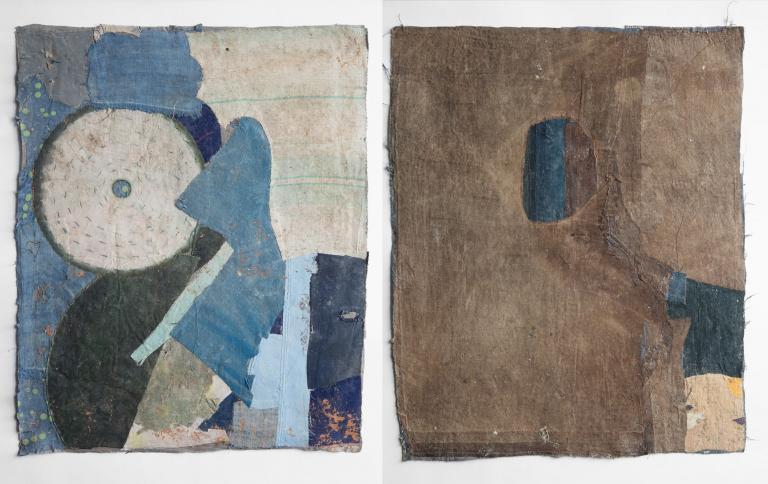
As for the international exhibition, in 1986, exhibition of works of Chinese artists Gu Wenda, Liang Shaoji, Shi Hui and Zhu Wei at the 13 Switzerland Lausanne Chinese-style modern fiber art. Such as the Still Living Creature of Gu Wenda, International Tapestry Art Biennale fulfilled the zero breakthrough, and showed the creates a beautiful scenery by making use of Chinese ink painting, calligraphy and seal (including the non artistic knitted fabric for supporting the seal), with the fundamental purpose to go beyond the shelf. The Sun Zi Bing Fa woven fabric wall hanging of Liang Shao is themed at the Yungang Grottoes Buddha, adopting the dislocation structure, so as to generate the kinesthesia and tension in the image spacing. The Longevity woven fabric wall hanging of Shui Hui is themed at the Chinese character “longevity”(shou). The well-knitted- surface texture, and the creation imaginary integrating the traditional culture and modern design embody the profound inner information and long history of Chinese characters. The “From Lausanne to Beijing: International Fiber Art Biennale”hosted by the Lin Lecheng, professor from the Academy of Arts& Design, Tsinghua University deserves the title of most influential fiber art exhibition in China. It is held every two years since 2000, having formed the internationally influential modern fiber exhibition series and going into the world to do world itinerant exhibition and culture communication. In 2013, the Fiber Visions: Hangzhou Triennial of Fiber Art 2013 was hold in Hangzhou to explore the experimental and critical nature of fiber art. The chief planner was Shi Hui, a professor of China Academy of Art Those exhibitions lay stress on discussing the experimental and modern nature of the fiber art in the context of contemporary environment from the perspective of academic and practical levels.
From plane to vertical and three-dimensional, from concrete to abstract, from concept to device, and from indoor to outdoor,it continues to add new look, with the development of times. Just a few decades, fiber artists have created the fiber art works rich in modern consciousness and abundant in forms by applying knitting, looping, winding and stitching, collaging, printing and dyeing, printing and other technology, integrating natural fibers(plant fiber, animal fiber and mineral fiber), chemical fibers(man-made fiber, synthetic fiber, and organic fiber) and metal, plastic, paper and other artificial materials,
From the wall hanging to intervention in public space, from small contexture to large shape, from the traditional weaving materials to modern soft materials, and from traditional weaving to digital weaving Chinese modern fiber art has crossed the boundary between craft and the high art, becoming a contemporary art integrating the art concept, technique, comprehensive materials and multimedia experiment. At present, in the development of Chinese fiber art, both the beauty of form and the general special shape of the wall hanging are emphasized. While the traditional techniques are maintained, efforts are devoted to developing new materials and new techniques, to crossing the boundary between craft and art, to doing integration and experiment, all contributing to the unique artistic glamour of the modern fiber art.
